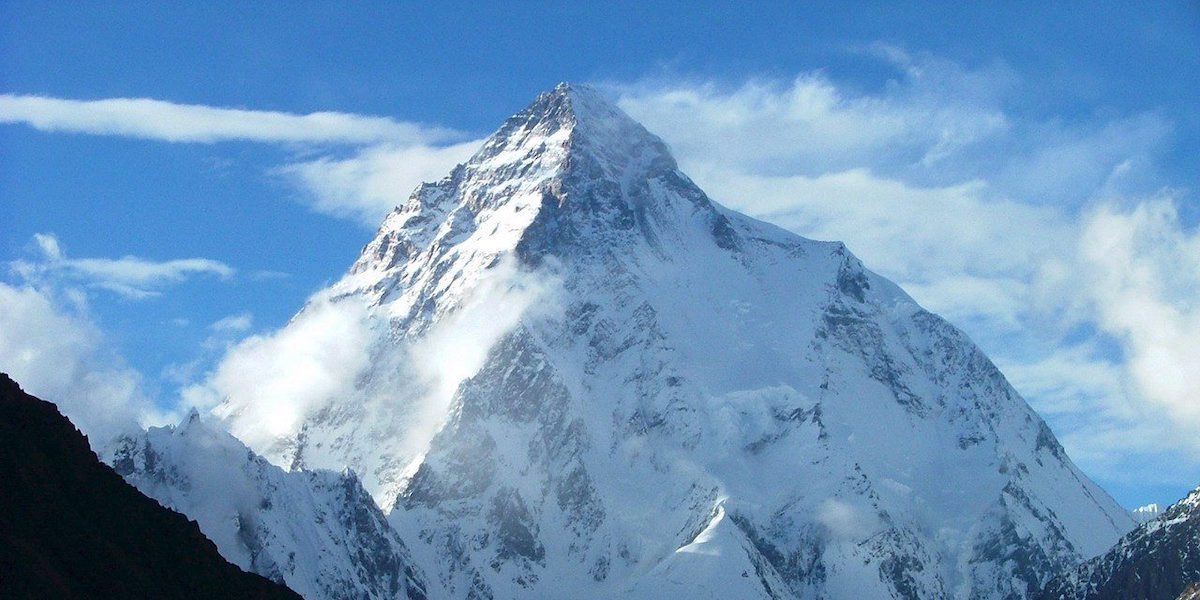At the end of July, Norwegian mountaineer Kristin Harila set the record for the shortest time it took to climb the 14 highest mountains in the world, completing the ascent of all peaks over 8,000 meters in China, Nepal, India and Pakistan in 92 days. But now Harila is accused not to have rescued one sherpa – i.e. a porter – Pakistani during his last climb on K2, and to have let him die in order to continue towards the summit and beat the record. She seems to show him a video taken by other climbers, which she however denies. She defended herself by claiming that the man, Mohammed Hassan, had been rescued, but that given the impervious conditions, saving him would have been impossible.
Harila is 37 years old, she is a former cross-country skier and between April 26 and July 27 this year He Completed climbing all 14 peaks in less than half the time of the previous record. The first was that of Shisha Pangma, in China, of 8,027 metres; the last one is that of K2, which is located between Pakistan and China, is 8,611 meters high and is notoriously the most difficult and dangerous 8,000 in the world. Harila climbed the mountains together with the Nepalese guide Tenjen “Lama” Sherpa and a group of assistants and collaborators. During climbs of this type the so-called sherpa are indispensable: they are people of Nepalese ethnicity or in any case originating from mountainous areas who generally know the mountains well and mostly deal with “hard” work, such as carrying the weights for the climbers, setting up the tents and equipping the routes before the climbing of mountaineers.
Hassan in particular had to take care of arranging the fixed ropes that mountaineers use to help themselves in the more technical and exposed passages. During the ascent, however, he had fallen near one of the most dangerous points of the mountain, known as bottleneckat about 8,200 meters above sea level.
Two Austrian climbers who were also on K2 on 27 July, Wilhelm Steindl and Philip Flämig, have taken some images showing Harila and some climbers in his group passing over Hassan’s body, motionless, during the climb. Steindl and Flämig accused Harila of having wanted to advance towards the summit in order not to slow down and to be able to beat the record, rather than try to save it.
Warning: some people may be upset by the images
In a’interview given to the Austrian newspaper StandardFlämig says he saw Hassan being “rescued by one person, while all the others proceeded towards the summit”, even if in the party there were sherpa and guides who could help him. According to Steindl “such a thing would be unthinkable in the Alps”: according to him Hassan was “treated as a second-class human being”, and if it had been a European person “he would have been rescued immediately”. “No one felt responsible for him,” Steindl always said.
Harila denied the allegations, arguing it was not true that she and her group did nothing to help him. “We tried to bring him up for an hour and a half and my cameraman stayed with him for another hour to deal with him,” said Harila, adding that “he was never left alone.” According to Harila, however, given the circumstances “it is difficult to imagine how he could have been saved”: Hassan had fallen in what the mountaineer defined as “probably the most dangerous part of the mountain”, where carrying someone along is extremely complicated both because the path is very narrow both because of the snow.
Steindl, who visited Hassan’s family after the climb, he said that the man had taken the job despite not having much experience, to help his mother pay her medical bills. Several climbers mentioned by Telegraph however, they expressed doubts about the type of equipment he had been equipped with: Harila said that when his team found him he was not wearing gloves or a suitable jacket and did not appear to have had supplementary oxygen available, essential at these altitudes where the air is much more rarefied (there are very few among sherpa and climbers not to use it).
Thaneswar Guragai, the head of the agency that organized Harila’s climb, Seven Summits, said normally porters try to rescue injured people in the high mountains, unless “it is practically impossible to do so”.
K2 is part of the Karakorum mountain range and is the second highest mountain on Earth after Everest (which is 8,848.86 meters high). Due to the elevation, the various sections that require considerable technical skills and the high risk of avalanches and falling rocks, it is considered the most difficult of the eight-thousand-metre mountains, in the sense that even the normal route, the simplest and sure, it’s very tricky. Historically it is also one of those with the highest mortality rate among those who tried to climb it, together with Annapurna I (8,091 metres) and Nanga Parbat (8,126 metres): once about one in five climbers died. In recent years it has become particularly popular with Western climbers, who now usually take much more precautions. In 2022 according to the specialized site Climbing.com only three people died while climbing K2, out of about 190 who had tried to climb it.
– Read also: Topped Everest for the first time 70 years ago
